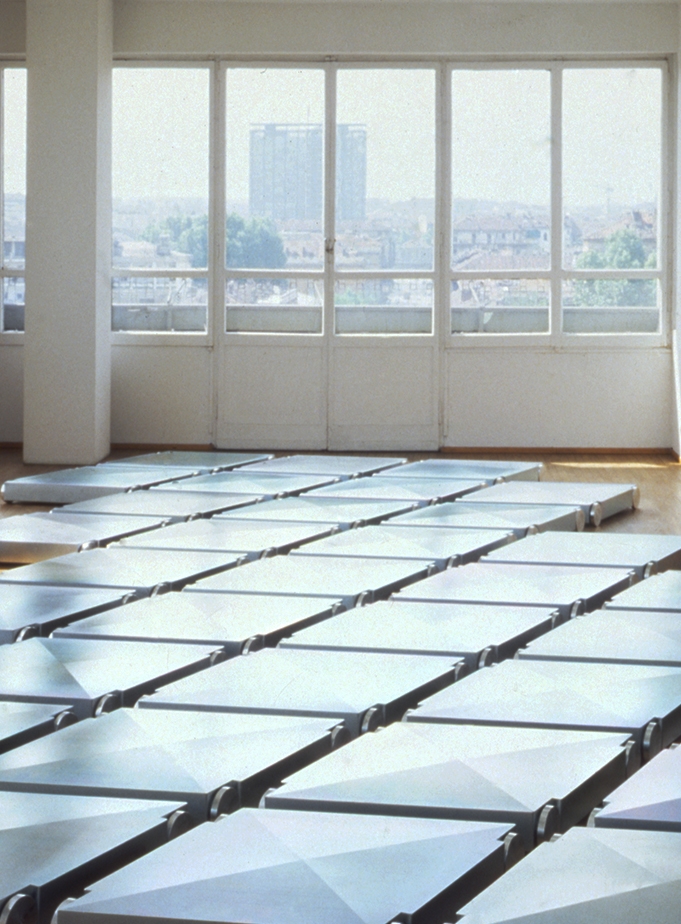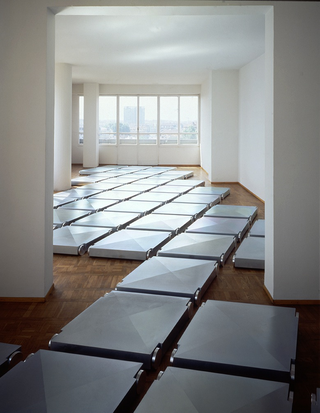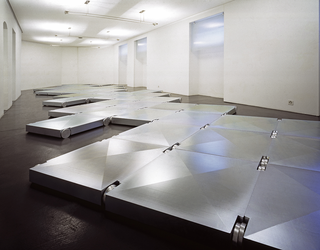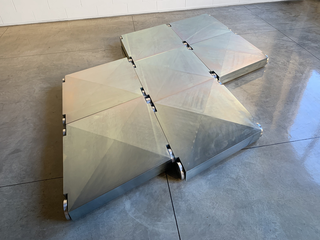Making space
It is a kind of intermediate flooring between the physical trampling of the art gallery and the mental place of Art: a system that mediates between man and the world, between being and becoming, A support for Art, 1992 supports the ability to circumvent obstacles. The horizontal artefact composed of galvanised steel parallelograms equipped with four wheels at the ends, are modules that make up a purpose-built floor for the gallery, a floor that does not support but escapes under the feet of those who tread it. The direction of its movement suggests the passage of time described by the earth's movement around the sun. The shifted direction, east-west, with respect to the architectural orthogonality of the exhibition space inserted in the urban fabric of Turin, defines the author's desire to search for "another space", for doing and for finding a new space.
G.C., Turin 1992




Social
Contatti
umberto@cavenago.info